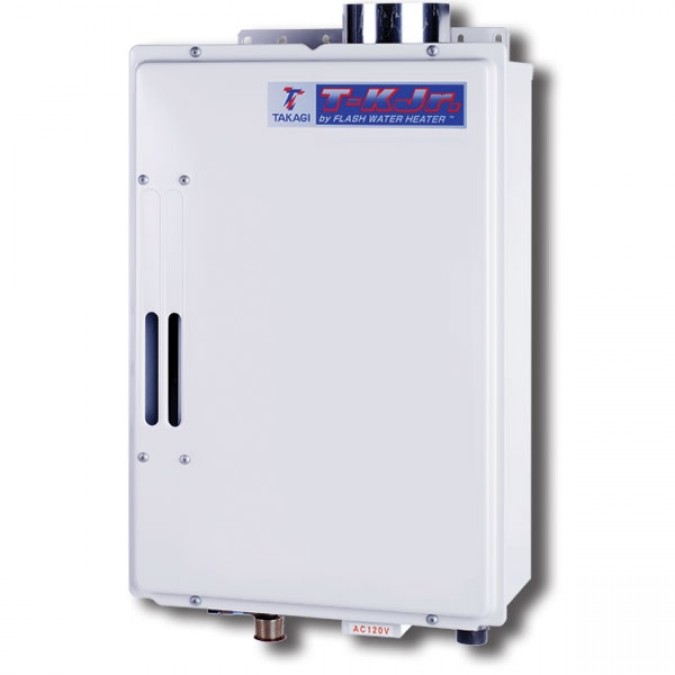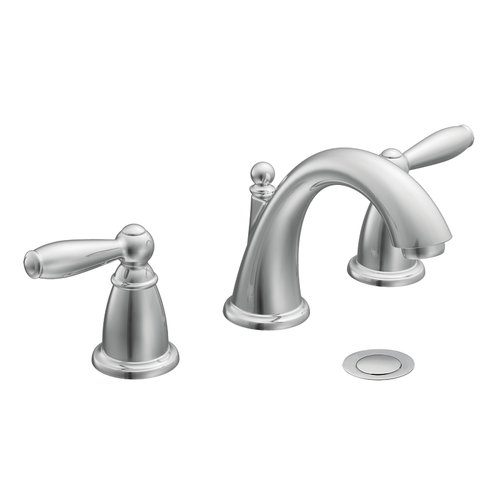Archive for the ‘Tiny homes’ Category
Dual on demand water heaters for redundancy and extreme efficiency
On my bus conversion I plan to have two propane water heaters. These will be low flow on demand models that can heat up to 1.6 gallons per minute. That’s plenty in a vehicle where water should be carefully conserved.
There are two main styles of on demand water heaters in this low flow category.
The first style is vented to the outside via a chimney, just like most on demand and tank style gas water heaters.
The second style, so called vent free, is not vented to the outside. This means all the combustion gasses stay inside, just like when you use an unvented gas fireplace or a Mr. Heater Buddy space heater.
The vent free propane water heaters cost slightly more than conventional vented on demand water heaters. Presumably the extra expense is to pay for the safety features not found on the vented models. The ventfree water heaters have a low oxygen sensor that will shut off the gas flow if there is insufficient oxygen for proper combustion. Improper combustion can produce more deadly carbon monoxide gas, which can kill you if it builds in concentration.
I am happy to pay more for safety. I already have a carbon monoxide detector on board since I use a Mr. Heater Buddy heater while I continue the build out of the interior. That heater also has a low oxygen sensor like the unvented water heater.
About a week ago I had what I think is a bright idea:
Install both vented and unvented water heaters routinely in all buildings that offer hot water to their users.
The reason this is a good idea is that both types of water heaters transfer only a portion of the heat they produce to the water passing through them. The rest of the heat either goes up the chimney or into the room depending on if the heater is vented or vent free.
When it’s cold enough outside that heat is required indoors, then it would be wise to use the vent free on demand water heater. Part of the heat will heat the water, and all the remaining heat will be deposited into the living quarters with the same 99%+ efficiency as if the gas were burned in an vent free fireplace.
When it’s warm enough outside that air conditioning is required indoors, then it would be wise to use the vented on demand water heater. Part of the heat will heat the water, and most of the rest of the heat will be sent up the chimney and out of the air conditioned space, saving electricity that would otherwise be needed to remove the surplus heat from a vent free water heater.
This could be complicated to set up and control, but not if one does the following small amount of extra work.
Run separate hot water lines from each water heater to the fixtures. Under the counter where the faucet valves are, install a three way valve before the hot water faucet valve.
Buy two faucets, and make sure they are the kind where you drill three holes in the counter top and mount three separate parts into their respective holes. Such faucets are called widespread faucets.
You’ll want two faucets because you will need nice looking matching knobs for my system. You’ll need to modify the second hot water valve and handle so that the part that’s above the counter line is unchanged, but the part that’s below the counter line will be mated to the three way valve I specified above.
This extra knob will control which on demand water heater is used when you turn on the hot water. If you set the three way valve to position A, then the vented water heater will be used and the vent free heater will stay off. If you set the three valve to position B, then the vented water heater will stay off and the vent free heater will be used.
If you need a greater amount of hot water, you could put the three way valve in its middle position, which would cause both water heaters to be used simultaneously.
This proposed system gives built in redundancy in case one heater fails.
Such a system would work for houses and offices as well, with a big benefit for water savings. Vent free water heaters only deliver 1.6 gallons of water per minute, so this would limit how much hot water a user can waste. If users insist on mimicing the flow of a normal tank style water heater, more than one 1.6 gallon per minute vent free water heater could be installed in parallel such that they would all start when the hot water faucet is turned on. That is provided code permits this, of course.
Both styles of water heater are available in propane and natural gas versions, so what I suggest here can be applied to all manner of installations, providing of course that building codes where you are permit such a system. Here’s a natural gas traditionally vented model that at the time of this writing sells for USD $175.99.
I care about such efficiency because I am building my bus conversion to be a model of efficiency. For example, I am installing triple pane windows with steel insulated window shades, for a total of 5 unbroken surfaces separating the indoors from the outside when the shades are drawn at night. I am also installing 8 inches of foam insulation on the roof, for an R rating of almost 60. I am hoping to be able to heat and cool the interior just with solar energy. I will have the propane water heaters on board for use when it’s too cloudy to warm enough water with the rooftop solar hot water collectors I plan to build.
I encountered a very unusual used vehicle salesman – Reza Fotoohi of Royal Motor in San Leandro, California
One of the projects I’ve been toying with requires that I own a box truck. I have shelved the project for now, but when I was investigating this project, I had the good fortune to meet Reza Fotoohi, the owner of Royal Motor. Royal Motor is located at 16575 East 14th Street in San Leandro, California, USA.
Fotoohi stands apart from every other used vehicle salesperson I have ever encountered in life, and I’ve met a lot because I’ve only bought used vehicles because I believe that’s the most sound financial way to buy a vehicle.
Fotoohi has a LOT of used trucks for sale. He had a second lot he had to drive me to filled with perhaps 100 trucks, from really old to almost new and from small to huge. He had three trucks that could have been suitable for my off beat project. I liked all of them very much. I dreamed about them for days.
I described my project to Fottohi in great detail, sharing my plans and my vision. He was an astute and careful thinker and conversationalist, I found. We spent perhaps two hours together, talking and measuring trucks and evaluating their suitability. Any of the three trucks would have been suitable for my project.
I am writing this post because Reza Fotoohi advised me to pass on all of his trucks and to keep looking for even a better fit. He took my card and promised to call me when he had a more suitable truck in stock. I took his card.
Fotoohi started this business in 1984, and you can tell it’s his passion and life’s work. He was proud of his expertise and inventory.
You can be certain that when my project gets back on the front burner that my first stop will be at Royal Motor. You can’t help but think highly of Fotoohi for putting my project coming out well ahead of his making a sale right now. I have no idea if his trucks are good or bad, but with this uncommon display of ethics, I suspect his trucks are worth what he charges. I found Royal Motor on Craigslist, which Fotoohi’s a huge fan of. He advertises exclusively on Craigslist now, and was able to cut his advertising expenditures of USD $30,000 per year by canceling his contracts with websites that charged for listings. That’s money going right into Fotoohi’s pocket I suspect, and Craig Newmark, Jim Buckmaster and their team at Craigslist should be so proud that their website allows such beneficial outcomes on a world scale.
If you need a used truck, please visit Royal Motor and tell Mr. Fotoohi that I sent you.
I used a chain hoist for the first time
I’ve been aware of chain hoists for most of my life. Today for the first time I used a chain hoist — a very useful device.
I didn’t think I had a need for a hoist. I once thought I needed one so I could lift boxes into the attic for storage. It turned out it was practical to carry the boxes up a ladder, so I donated to Goodwill Industries of San Francisco the electric Harbor Freight hoist I had purchased for the attic project.
Yesterday I discovered I had a new and immediately pressing need for a hoist. I regretted I had donated the brand new electric hoist to charity. But after today, I am thrilled I donated the electric hoist, because I now know the wonders of a manual hoist.
I paid about USD $40.00 for a brand new 1 ton Harbor Freight chain hoist. This weighs 22 pounds — I received tremendous value for my money. The hoist was on sale for $44.95 but I had a 20% off coupon that brought the price down.
I needed a hoist because yesterday I bought a heavy machine tool that weighs 300 pounds. The staff at Harbor Freight in Pleasant Hill, California loaded it into my car trunk. They had a hydraulic scissor lift table to wheel the machine to the edge of my trunk lip, and then they just tilted it in, without having to ever really lift it.
When I got home, even with three of my roommates helping, I could not safely remove the machine from my trunk. I became scared we might drop it on our feet, so I called off the attempt once I fully appreciated just how heavy 300 pounds is, particularly when it’s in a large wooden crate you can’t really grasp. Thank you to my roommates for trying to help me. I appreciate your willingness to help and your enthusiasm for living here.
I headed back to Harbor Freight with the crate still sticking out of the trunk at 45 degrees.
I got the hoist, a D anchor with a 10,000 pound limit and some lashing straps. I used two 4 inch 1/4 x 20″ lag bolts to screw the D anchor into a 2 x 12″ floor joist in my garage. I positioned my trunk directly under the anchor and hooked the hoist the the D anchor. Then I wrapped two lashing straps around the wooden crate and hooked them over the hoist load hook.
With a full face protective shield on, I pulled on the ‘up’ chain. For every foot of travel of this chain, I estimate the load chain moved about half an inch.
What’s so great about a chain hoist is you can safely let go at any time and the load will not fall. To lower the load, you pull slightly on the ‘up’ side of the chain and then begin to pull the ‘down’ side of the chain. You can let go at any point and the load will stay put.
I pulled the box all the way out of the trunk and then drove the car forward a few feet. I returned to the hoist and lowered the crate to the floor and detached the hoist. I didn’t need to bother my roommates at all, and I felt safe during the entire process.
I will leave the D anchor attached the ceiling in case I ever need to lift anything else out of my trunk.
I plan to keep the hoist, as it will no doubt be useful for some of the projects I’ve been dreaming about building.
I’ll write a separate post about the heavy machine tool I now have in my garage.
I’ve written about Harbor Freight before.
Harbor Freight is a magical tool store that inspires me to try to do great things. Home Depot and Lowes as tool stores are pathetic. Of course those large retailers sell mostly items that are not tools, so I still do shop at those stores more often than I like to admit.
Please subscribe to my blog. There’s a subscribe box above and to the right. You may also follow me on Twitter and friend me on Facebook. Thank you.
The Cube Project – a net zero tiny house in the United Kingdom
Here’s a small house that a lot of thinking went into. It’s called The Cube Project.
The Cube Project is an initiative of Dr. Mike Page at the University of Hertfordshire in the United Kingdom. Interestingly, Page is an engineer and Reader in Cognitive Psychology at the University’s School of Psychology.
Here’s a video tour of Page’s impressive net zero house.
I want one of these in my backyard!






